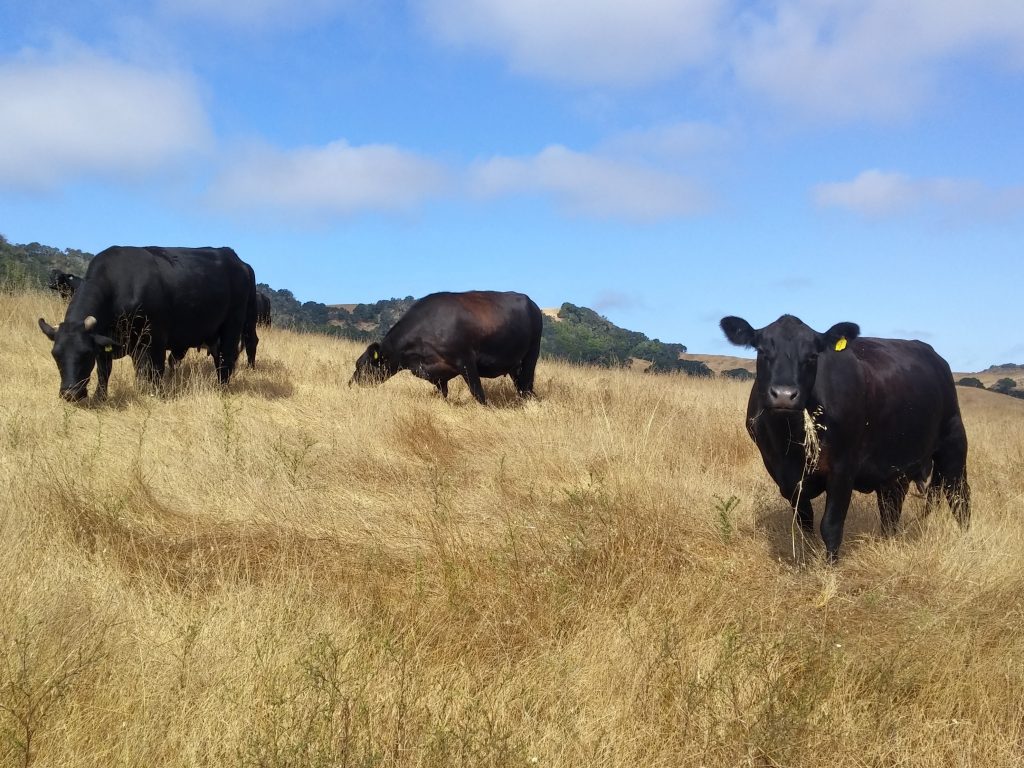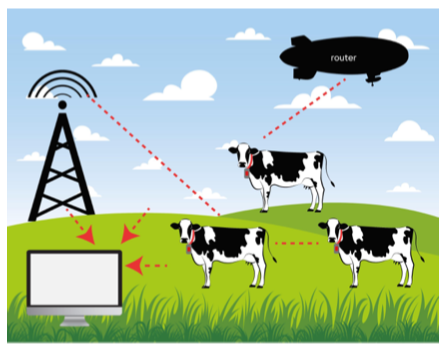Smart Cow Tracking Prototype Developed by Cal Poly Students
Overview
In a partnership with California Polytechnic State University’s Digital Transformation Hub (Cal Poly DxHub), CAFES agricultural engineering and CENG engineering students and faculty recently developed a device that will improve the way ranchers track livestock on remote ranches. The team used Amazon’s Working Backwards methodology to develop a device that can track location and body temperature when worn around the animal’s neck. This device uses very little power and can communicate without the need for cellular connectivity, and as a result, the device can be worn for up to a year without maintenance. The technology allows ranchers to monitor an animal’s health and location throughout the year.
Problem
Cattle ranchers that utilize expansive, rolling ranch lands often have difficulty keeping track of their herd and individual cattle. Tracking hundreds of cattle across hundreds of acres is a challenge for even the most sophisticated rancher. Lone bulls, pregnant ‘mama’ cows, and other cattle that exhibit loner behavior can separate from the herd and move into covered, wooded areas making them difficult for ranchers to visually track. The inability to locate cattle creates operational challenges for the rancher that can lead to economic loss. An example of the user experience is shown below:

Innovation in Action

Cal Poly’s DxHub led the team through an Innovation Workshop using Amazon’s Working Backwards process to identify the customer (a rancher), understand the problem from the perspective of the rancher, and reach consensus on a customer obsessed solution benefiting the rancher. By innovating on behalf of the rancher, the team was able to generate novel ideas and solutions that addressed the rancher’s greatest needs and pain points.
Cattle ranchers that utilize expansive, rolling ranch lands often have difficulty keeping track of their herd and individual cattle. Tracking hundreds of cattle across hundreds of acres is a challenge for even the most sophisticated rancher. Lone bulls,pregnant ‘mama’ cows, and other cattle that exhibit loner behavior can separate from the herd and move into covered, wooded areas making them difficult for ranchers to visually track. The inability to locate cattle creates operational challenges for the rancher that can lead to economic loss.
Results
Students separated into two teams, each focused on a different aspect of the problem. The first team worked on building out a collar prototype. The collar was designed to be power efficient and have the ability to receive GPS information as well as track temperature and humidity while assuring proper antenna position. The system doesn’t rely on a cellular network to transmit data, instead the system communicates over a low-powered wide-area network (LPWAN). This enables ranchers the ability to track animal position, temperature, and humidity. The second team worked to build a web/mobile application that would provide a visual, map-based dashboard to inform a rancher of the location of the heard. The system also provides visualization for ranchers to streamline operations, reduce costs, and maximize the economic benefit of their herd.
Conclusion
Supporting Documents
| Press Release & Frequently Asked Questions | During the Innovation Workshop, a fictional Press Release and nonfictional Frequently Asked Questions are drafted. This is a tool that is used to define the solution and why it matters to the customer. |
| Narrative | A document that describes an overview of the process and solution. |
| Storyboard | A series of frames designed to illustrate the problem and the impact of the solution visually. |
| Poster Session | Poster that was presented at the College of Engineering Summer Undergraduate Research Program Symposium. |
| Architecture diagram | A diagram that describes the technical components needed to implement the solution. |
About the DxHub
The Cal Poly Digital Transformation Hub (DxHub) is a strategic relationship with Amazon Web Services (AWS) and is the world’s first cloud innovation center supported by AWS on a University campus. The primary goal of the DxHub is to provide real-world problem-solving experiences to students by immersing them in the application of proven innovation methods in combination with the latest technologies to solve important challenges in the public sector. The challenges being addressed cover a wide variety of topics including homelessness, evidence-based policing, digital literacy, virtual cybersecurity laboratories and many others. The DxHub leverages the deep subject matter expertise of government, education and non-profit organizations to clearly understand the customers affected by public sector challenges and develops solutions that meet the customer needs.
